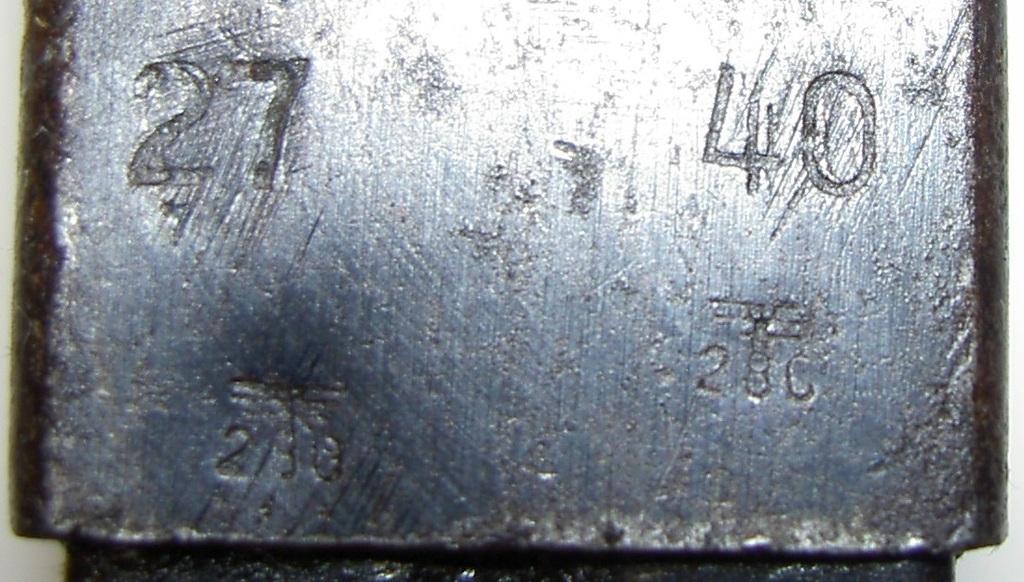-
Contributing Member


Austin manufactured MK1 Sten mag
I have this MK1 Sten mag manufactured by the Austin Motor Company and it is quite interesting in that a slightly a different to the normal method of construction appears to have been used for the main casing. The casing appears to have been butt welded together down the centre of the side opposite to the side with the viewing holes, as pointed out with the pen. The weld join was just about visible when the mag was inspected from the inside. The internal surface of the weld is very smooth as would be required for the mag to perform correctly and it is very difficult to actually see where the weld is at all. In my opinion this mag is a good demonstration of the excellent quality of workmanship produced in the Austin factory during WW2.
*N.B. M/13 is the WW2 dispersal code for the Austin Motor Company.
Information
 |
Warning: This is a relatively older thread
This discussion is older than 360 days. Some information contained in it may no longer be current. |
|
Last edited by Flying10uk; 12-24-2016 at 07:36 AM.
-
-
12-24-2016 07:32 AM
# ADS
Friends and Sponsors

-
Advisory Panel


I think these would start as a solid tube like exhaust tubing. They'd be bent to shape from there in one fell smash...so the seam welding would be easier than it would be at this shape...
-
The Following 2 Members Say Thank You to browningautorifle For This Useful Post:
-
-
I think that you're right BAR. Some were made from round stock, like bayonet scabbards are. First cut to length then semi rolled to an oval. Put onto a former and pressed downwards into a shaped housing to form the flat front and parallel sides. Then a roller comes in and rolls the rear reinforce/corrugation we see in photo 3. Former removed and there you have it, a magazine casing. idn't I mention this in the little booklet? There were as many variants as makers who were left to their best devices in order to make the best use of their facilities.
Don't forget also, that the M31 will probably indicate the maker of THAT part as opposed to the whole assembly
-
-
Contributing Member


I hadn't thought of the possibility of starting off the process from welded tube but that could explain the almost invisible weld which can only just be seen from the inside of the mag.
-
-
Advisory Panel


idn't I mention this in the little booklet?
I didn't think to go check it actually...it's downstairs...
-
-
Advisory Panel


I have one magazine which has a pronounced weld bead in the same position. No way of knowing if the weld was before or after the metal was formed into the trapezoid shape.
-
-
Contributing Member


If the weld is a pronounced bead then it was probably welded after forming because forming the profile of the mag casing over formers, as suggested in Posts 2 and 3, would tend to smooth and flatten-out any weld bead.
-
-
Advisory Panel


My original thoughts were that because many of these groups produced exhaust tubing for motor companies, and if you check the thickness you may find similarities... Much like the thickness of the Sten body it's self. I'd think they'd work with material ready available...some exhaust tubing also has rough bead. Yes, the mandrel should smash it a bit though.
-
Thank You to browningautorifle For This Useful Post:
-
Turpin made the Sten with SAE, SWG etc specs uppermost in his mind. Alas, he didn't design the magazine, that was George Lanchester. All Turpin did was to shorten it to suit.
-
The Following 2 Members Say Thank You to Peter Laidler For This Useful Post:
-
Legacy Member

-
















 PM
PM

















